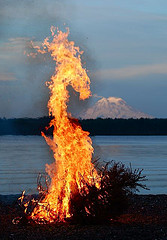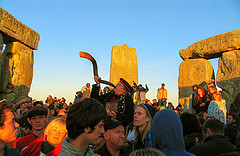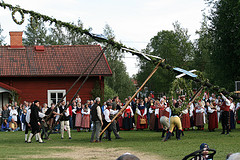In North America, in Europe, or even in Asia, the tradition of celebration of the summer solstice is old and differs depending on the the ages.This moving experience, coming from paganism, was integrated to christian rituals in Europe. Let’s see the different celebrations of this special time of the year.
The summer solstice has been celebrated since the Antics and carries many symbols.

If the summer solstice isn’t a main event in the year in France anymore, except for the day of music, it had been an important day in the ancient Gaulle. It was in fact the occasion to celebrate Epona, a mare goddess, protector of the horses who also symbolises fertility. This idea of celebrating fertility on the summer solstice was pregnant everywhere in Europe.
On the contraary, celebrations in ancient China for this specific day were dedicated to feminity, earth and the forces of the yin in opposition with the celebrations of the winter solstice, which were devoted to masculinity, heavens and forces of the yang.
On the other side of the Pacific Ocean, Native Americans used to honor the sun on the longest day of the year. Specific and impressive rituals were accomplished on that day, especially danses. Native Americans often cut a tree on this occasion, which symbolises the connection between earth and heavens.
Today’s celebrations of the solstice vary from pagan events to music festivals.

Nowadays, celebrations for the solstice have changed, except in Stonehenge, where new age tribes keep on celebrating fertility by attending to the sunrise. Celebrations goes on the entire night before the sunrise with music and picnics. This experience is considered as fascinating for many people and became peaceful after the fights between attendants and the police in the 1980s.
In Alaska, where the sun shines 19 hours on this day, loads of special events are organized, especially charity events and chidren carnavals. In Anchorage, the capital city, a significative music festival is held by the AWAIC, an organization helping abused women.
In Scandinavia, the solstice is one of the most significative celebrations of the year. This is the first day of summer holidays in Sweden. In this country, celebrations are different depending on the region. But the Midsommar, which is a national holiday, is the occasion to gather families. Houses are decorated with wreaths. Traditionnal fires are also implemented and poles are raised in the different villages. If the celebrations were first dedicated to nature and fertility, but also to the good realisation of the fall harvest, they were later integrated to the christian calendar during the christianisation of Sweden.

People also try to foresee the future on this day, particularly to determine one’s future spouse. In Norway and in Danemark, traditionnal fires and processions are also held. In the latter, this period correspond with another main national feast: the Saint Hans on the 23rd of June. Danes sing proudly tehir anthem on this day and burn straw witches in memory of the 16th century.
Thomas PRADO forwww.buddhachannel.tv




